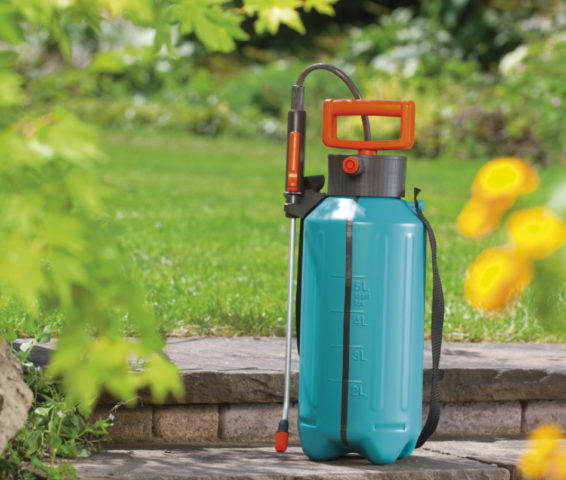Content
Watering cabbage with ammonia can be done by gardeners who do not accept chemical additives when growing crops, and gardeners who are loyal to drugs for controlling diseases and pests. The substance has found application not only for medical purposes, but also for processing vegetable crops. It must be diluted in strictly defined doses, in compliance with safety rules. Only in this case does it prove useful in the garden.
Is it possible to water cabbage with ammonia to prevent pests?
An aqueous solution of ammonium hydroxide is a nitrogen compound. In practice, it is often used for medical purposes - for disinfection. Many people are familiar with the specific pungent odor of ammonia. It is explained by the presence of volatile components in the composition. Although the smell disappears quickly, it can be used to repel insects if you water crops in need of protection.
Ammonia is used to rid cabbage of caterpillars, aphids and other pests. Slugs, caterpillars, and mole crickets are especially sensitive to ammonia.

It is quite difficult to remove mole crickets from the garden - repeated treatments may be required
Another goal that summer residents achieve when they decide to water cabbage with ammonia is fertilizing and enriching the soil. The substance contains nitrogenous compounds. And nitrogen, as you know, is necessary for the development of plants. Its deficiency leads to slower growth and formation of ovaries, or even their complete absence.
Despite the obvious benefits of the substance, its use may be unsafe. The pungent odor negatively affects not only insect pests, but also humans. It causes headaches, skin irritation and burns, vomiting and even respiratory arrest. Therefore, before watering the cabbage, it is important to take care of your own protection and prepare:
- rubber gloves that will protect the skin of your hands from redness and chemical burns;
- a respirator or gauze bandage necessary to protect the respiratory system;
- protective clothing that will cover the body.
How to dilute ammonia for cabbage
Before pouring ammonia over the cabbage, you need to determine the proportions and learn about the features of its use. Oversaturation of the soil with ammonia can cause the leaves to get burned and begin to accumulate nitrates harmful to humans, and the cabbage itself will get burns.
How to properly dilute the product to water the plants is described in the table.
Purpose of using the solution | Proportions | Processing Features |
Fertilizing the soil, preparing for planting cabbage | 50 ml of ammonia per 10 liters of water | It is carried out only in case of acute nitrogen deficiency in the soil, 2 weeks before planting. |
Treatment of seedlings before planting in open ground | 10 ml of ammonia per 10 liters of water | The product is applied into the holes prepared for the seedlings, 500 ml into each hole. The procedure protects against pests and is harmless to young plants, providing an additional source of minerals. |
Root feeding | 6 tbsp. l. ammonia, 10 liters of water | First, the cabbage must be thoroughly watered, then 500 ml of the substance must be added to each plant. |
Use as an insecticide | 50 ml of ammonia solution, 50 g of laundry soap, 10 l of water | Grind the soap, add warm water, then dilute it in a bucket. Treat cabbage with ammonia against pests twice with an interval of 10 days. |
Prevention of insect pests on young cabbage | 25 ml of ammonia solution, 10 l of water, 50 g of laundry soap | The crop is treated once a week to protect against aphids, caterpillars, and slugs. |
How to water cabbage with ammonia against pests
Spraying with ammonia solution is an effective way to control insect pests. The procedure is carried out in several steps:
- Add the required amount of ammonium hydroxide solution to the container with water.
- The product is mixed well and poured into a sprayer.
You can water cabbage to combat various pests:
Insect pests | Proportions | Processing Features |
Snails, slugs | 40 ml aqueous ammonium hydroxide solution, 6 l water | Watering cabbage with ammonia to prevent slugs should be done, paying special attention to the underside of the leaves.Treat the surrounding soil. |
Aphid | 3 tbsp. l. ammonia, 10 liters of water, 50 g of laundry soap | Water with freshly prepared product twice, at intervals of 2 weeks. |
Caterpillars | 50 ml of aqueous ammonium hydroxide solution, 3 tbsp. l. vinegar essence, 10 liters of water | Ammonia for caterpillars on cabbage is used once a month. They wash both sides of the leaf plates with it, trying to expand the head of cabbage as much as possible. |
Medvedki | 10 ml aqueous ammonium hydroxide solution, 10 l water | It is necessary to water the crop at the root, repeat the procedure twice with a break of 7 days. |
Useful tips
Gardeners share their own experience on how to water crops using ammonia:
- It is better to water the plants using a watering can with a shower head. Sprayers spraying a fine suspension are not suitable for this purpose, since ammonia quickly evaporates and its use becomes ineffective.
- Simultaneously with treating cabbage with ammonia, you cannot use nitrogen fertilizers, as this leads to excess nitrogen in the soil.
- If there are lesions on the leaves, they must be removed.
- Before watering vegetables, the soil should be slightly moistened.
The best time for the procedure is morning or evening
Conclusion
If you pour ammonia over cabbage, you can solve two problems at the same time: scare away insects with the pungent smell and enrich the soil with nitrogen, necessary for the growth and development of the crop. The product is used for pest control and prevention purposes. In correctly selected proportions, it does not cause harm.











